During this period, filled with anniversaries and birthdays (Pinocchio celebrated his 80th on February 7th) we continue our Fantasyland promenade via Walt Disney Animation Studios’ first golden age productions (1937-1942).
The First Disney Princess
Our collection begins with Snow White and the Seven Dwarves (1937), the very first full-length animated feature film from the Studios. The attraction of the same name, the shop La Chaumière des Sept Nains and Storybook Land all refer to this film.
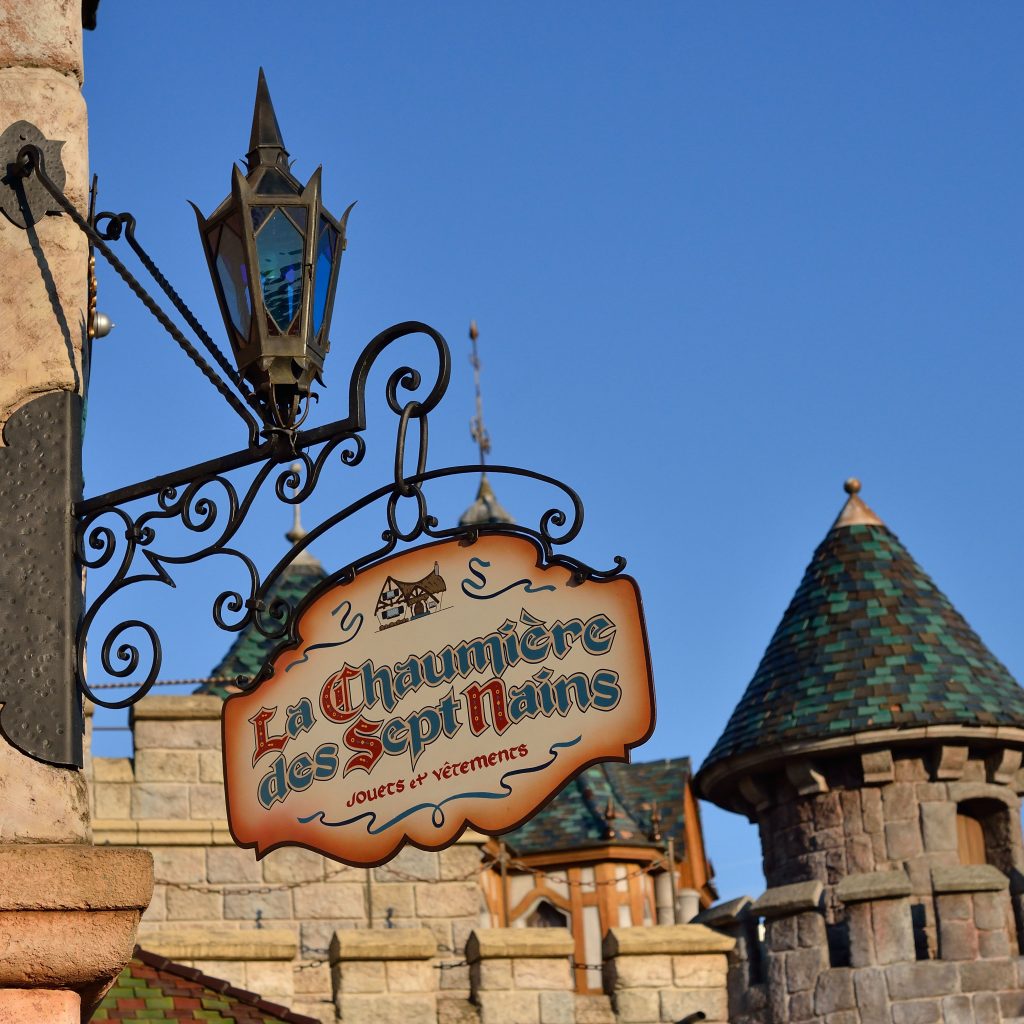
One of the film’s strengths is its perfect balance between wonder and thrill, thanks to spectacular animation and the era’s latest special effects, notably in the escape scene going into the forest and later the Queen’s transformation.
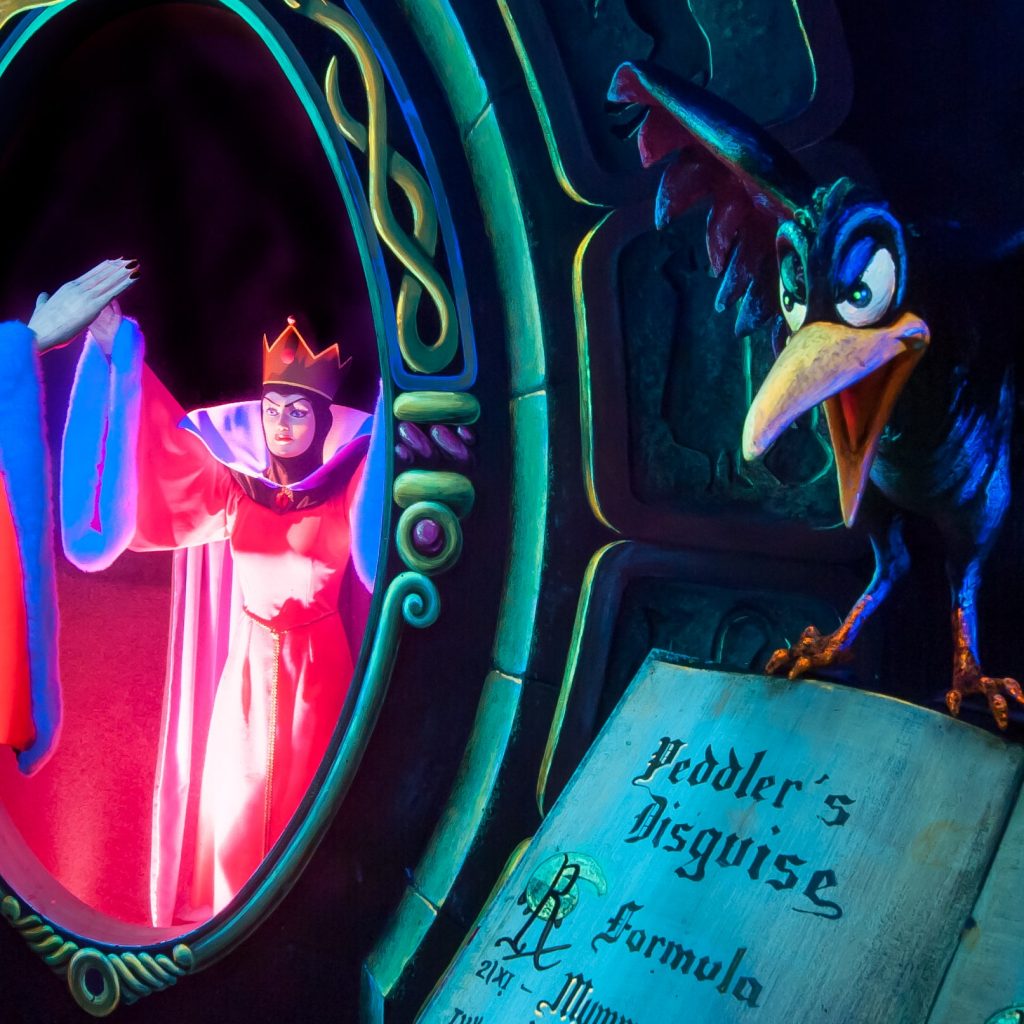
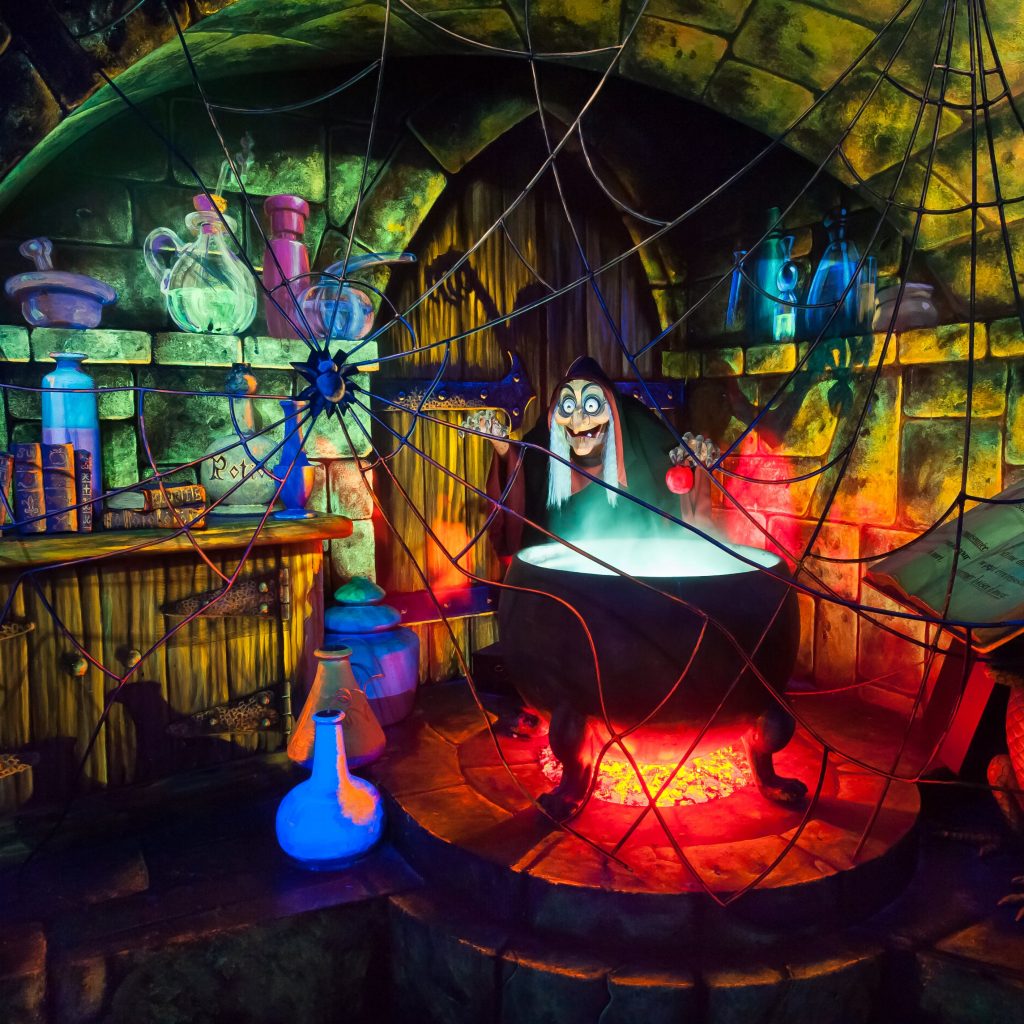
The attraction and the shop are organized around the same idea. In the attraction, the Guest is in awe every time he or she is in the company of Snow White…be it at the beginning in the cottage of the Seven Dwarfs or at the end with Snow White’s Prince. As for thrill, it inevitably seizes the Guest lost in the forest, just like our Princess, pursued by the Evil Queen.
In the same spirit, the shop La Chaumière des Sept Nains is divided into two parts. On one side, the Queen’s intimidating castle, using the same theme in the attraction, and on the other, the famous cottage. To make the cottage even more warm and welcoming, Imagineers meticulously recreated the scene of the animals doing laundry in the pond to the melody “Whistle While you Work.” Special attention was also given to the details of the cottage’s interior, including various kitchen utensils and the names of the dwarfs sculpted on the beds.
The storefront has its own story linked to several Disney classics. At Disneyland Paris, its belfry-shaped architecture and characteristic stained-glass windows offer the perfect transition between the aesthetics of Sleeping Beauty Castle and that of the Evil Queen. As early as 1954, Disneyland Resort designers had already drawn up plans for a children’s clothing boutique, named Fantasia of Disneyland. In the 2000s, it became the Bibbidi Bobbidi Boutique, where young visitors are transformed into princesses or knights, under the guidance of Cinderella’s Fairy Godmother.
From Tuscany to Bavaria
In 1940, Pinocchio was released on American screens, and his song “When you Wish Upon a Star” became the Disney anthem par excellence. At Disneyland Paris, we find the film in Pinocchio’s Fantastic Journey, at La Bottega di Geppetto and at Au Chalet de la Marionnette. Once again, Imagineers set out to faithfully reproduce the film’s warm ambiance, particularly that of Geppetto’s workshop, in both the attraction and the boutique. The clocks and music boxes were recreated by Albert Hurter, a Swiss illustrator to whom Walt Disney had entrusted the design of many European-inspired elements.
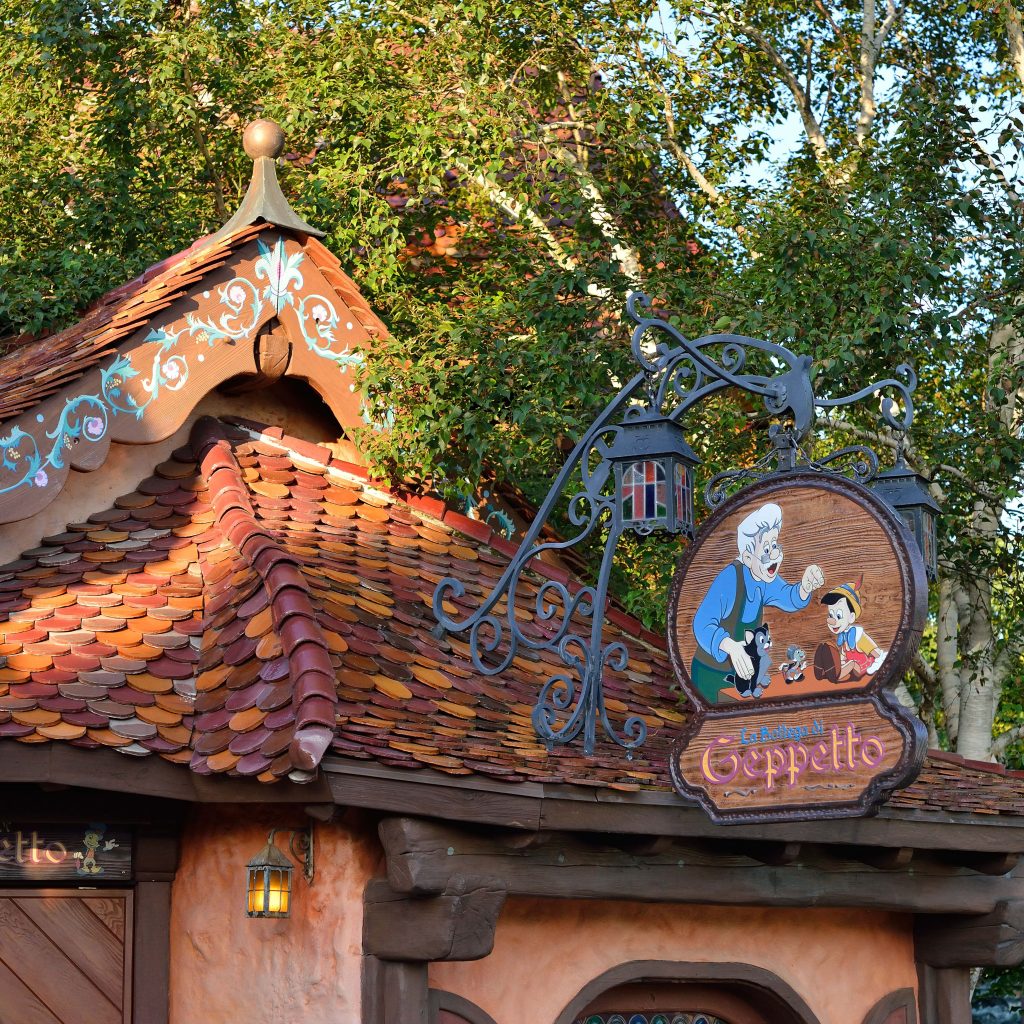
As with Snow White and the Seven Dwarfs and Peter Pan’s Flight, particular attention was paid to reproducing the original colors in the animated films as true as possible, taking the black lighting effects into account.
More broadly, the aesthetics of Fantasyland are directly inspired by that of Geppetto’s village. As animation historian Robin Allan points out for this animated classic, illustrator Gustaf Tenggren was largely inspired by the town of Rothenburg in Bavaria, Germany. The town was known for keeping its medieval architecture intact and Tenggren added an “animated” touch. Imagineer Tom Morris and his team took the same principles for Fantasyland, even emulating “squash and stretch” elasticity of animated characters in the architecture itself, giving Guests the impression of walking inside an animated cartoon.

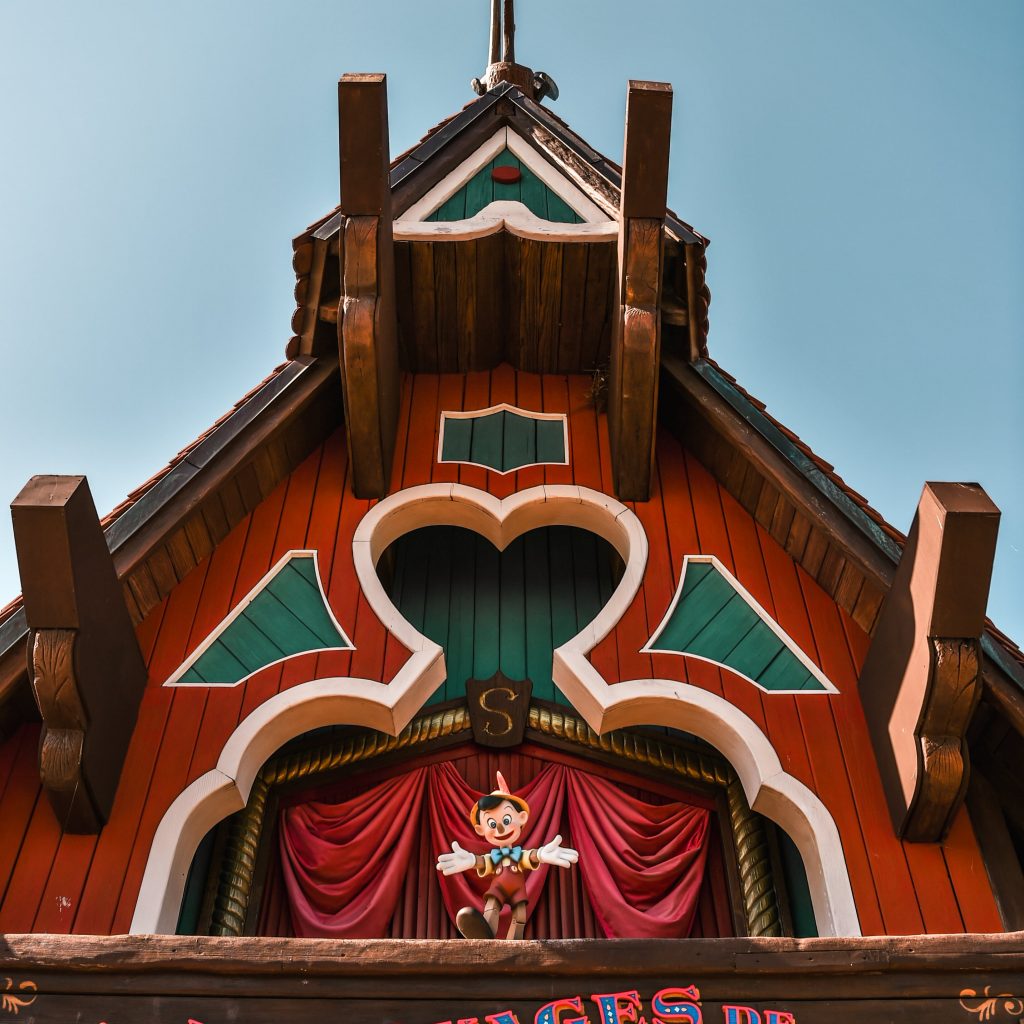
Variations on a Fantasy
Another masterpiece released the same year as Pinocchio was Fantasia, a truly animated concert, two segments of which are featured at Disneyland Paris. “Night on a Bald Mountain,” based on the symphonic poem by Modeste Moussorgski, is perfectly represented in the miniature universe of Storybook Land. The depiction is true to Walt Disney’s vision of the character Chernabog, immense in the middle of a Lilliputian village – except here, the Guests seem to be the giants!
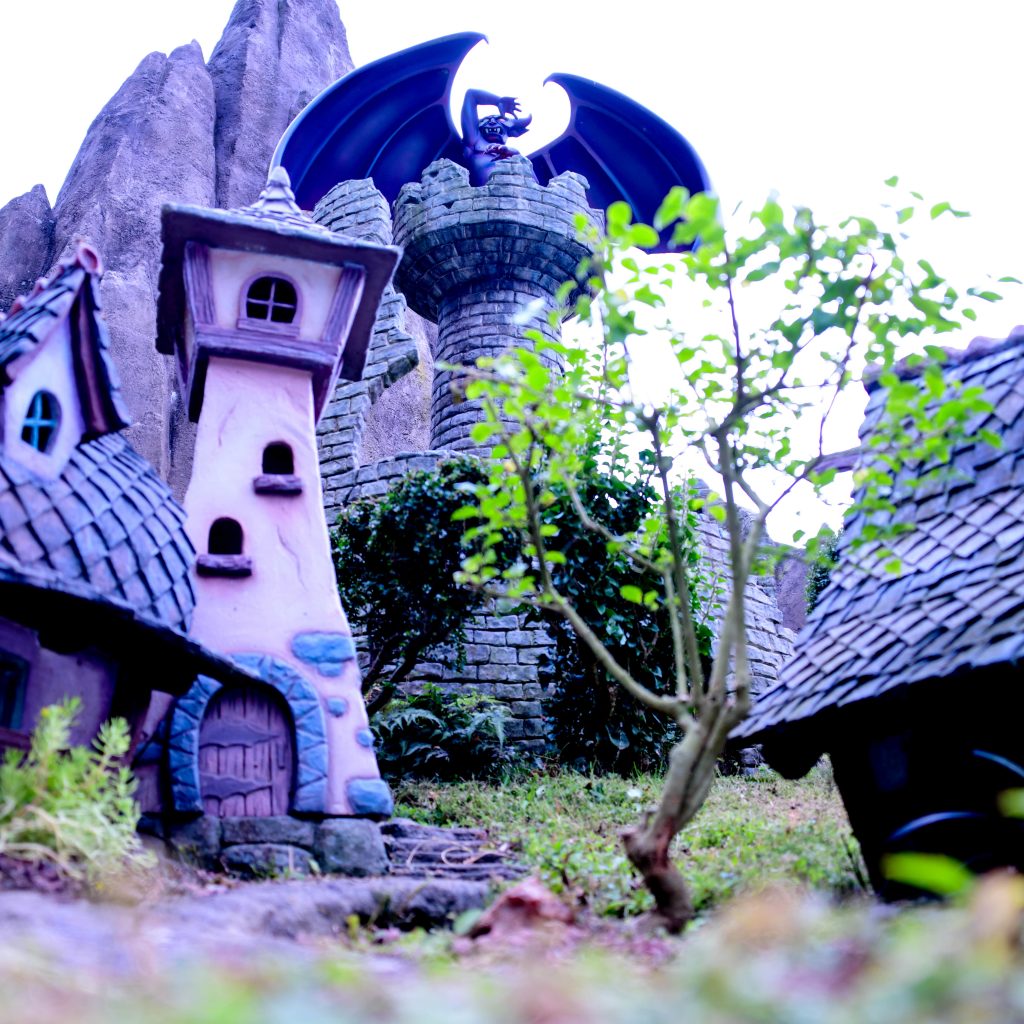
“The Pastoral Symphony” in Fantasia, which transposes Beethoven’s music into this mythological universe, is also evoked at the beginning of Storybook Land and at Fantasia Gelati in the form of a fresco that is both elegant and funny on which Bacchus and the Centaurs feast on the shop’s ice creams. Here we find the spirit of legendary artist Ken Anderson – among others – who was inspired by the idyllic landscapes of Lake Maggiore. A true paradise on earth!
“Are we ready, Casey?”
The last film of this golden age that you’ll find in Fantasyland is the ever-present Dumbo(1941). Disneyland Paris Imagineers reproduced two mythical moments, starting with Casey Jr. sequence. However, did you know that Casey had appeared in movies before Dumbo? This iconic character appeared four months before the film’s release in Walt Disney’s Secrets (The Reluctant Dragon), a scripted tour of Walt Disney Animation Studios showing various stages of making an animated film. In the sound effects department, our visitor met a team making the sound effects for a sequence based on a nice little locomotive. Casey was born!
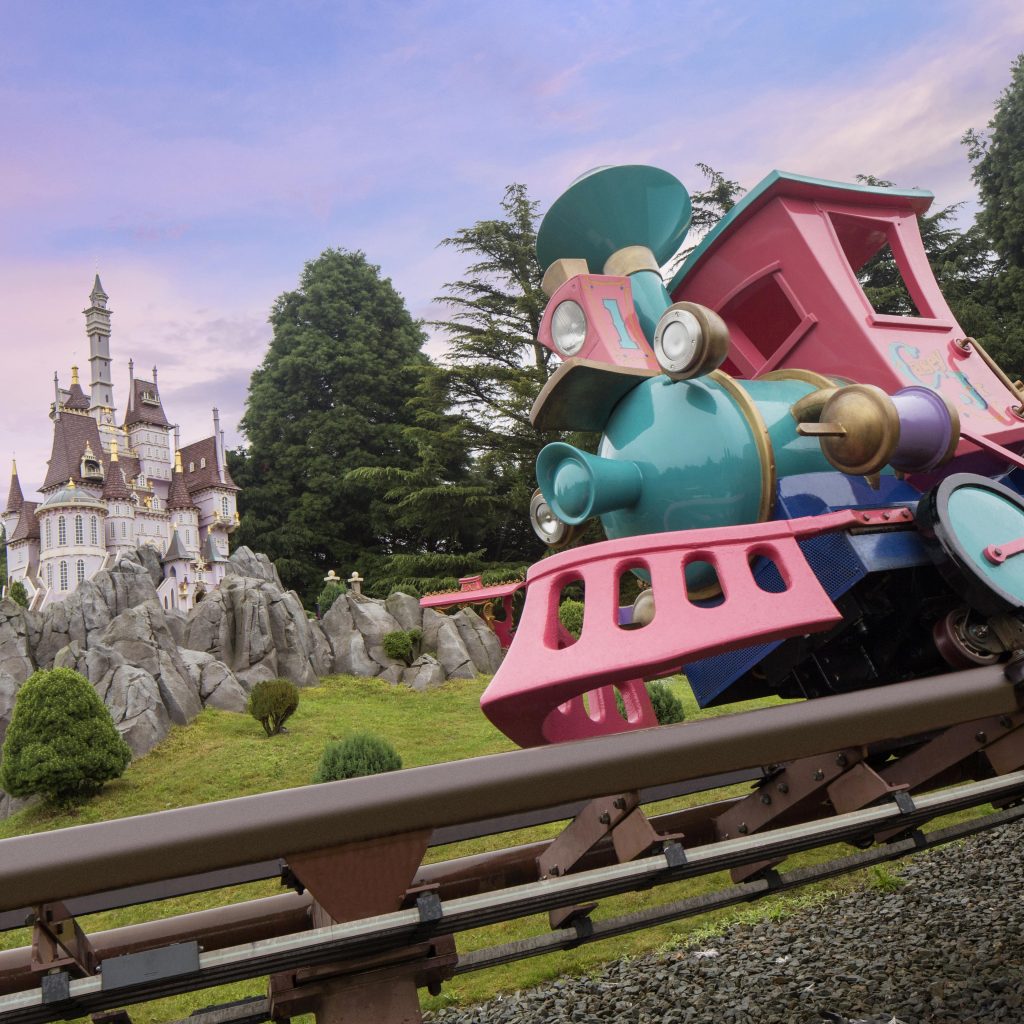
As for Dumbo the Flying Elephant, it is an amazing circus act worthy of the film, where our little elephant flies through the air, with a little help from his friend Timothy Q. Mouse and a feather… magic!
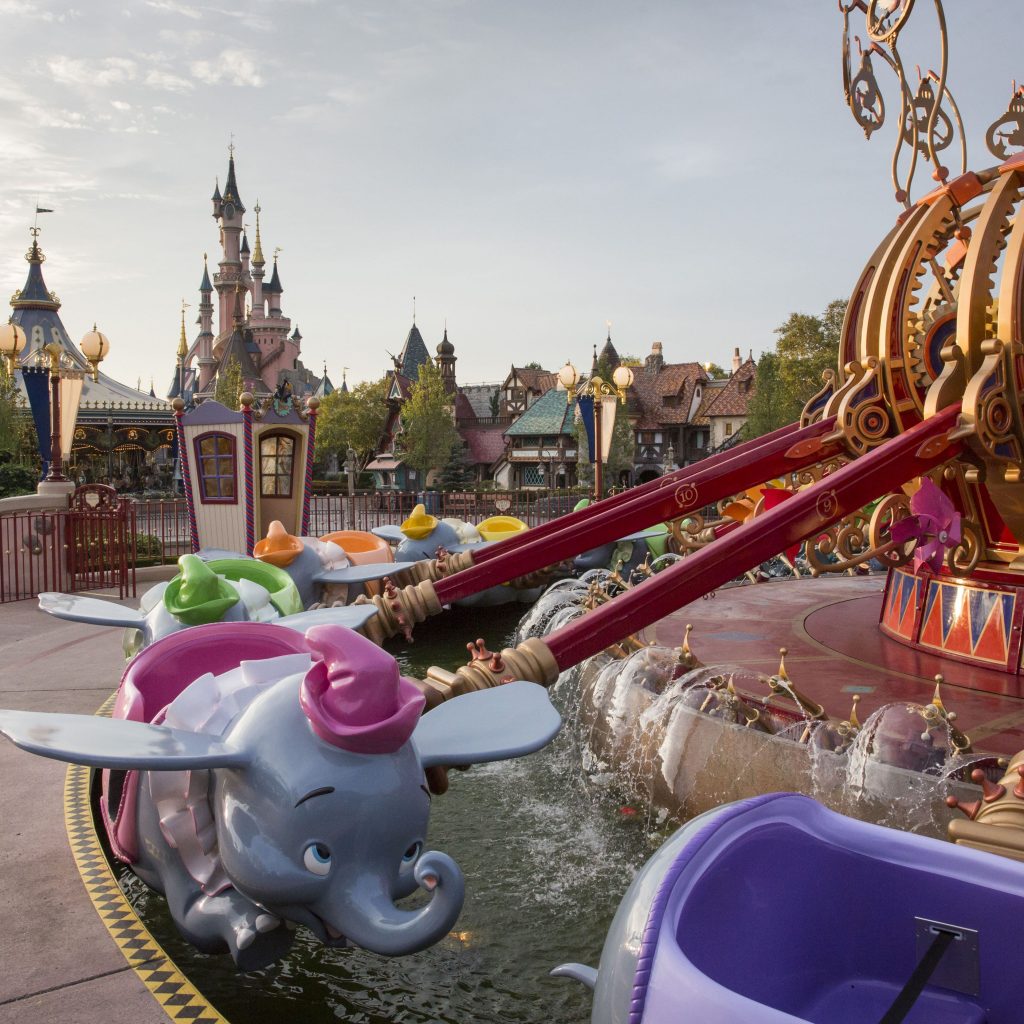
See you very soon for our last visit to Fantasyland!

